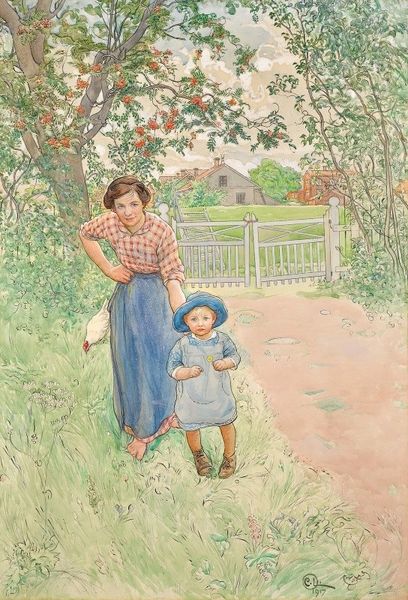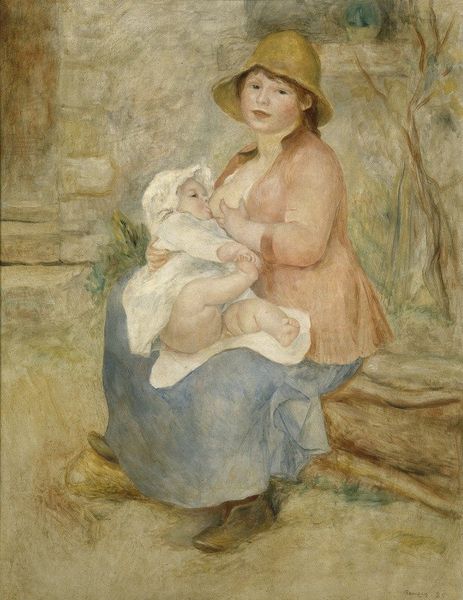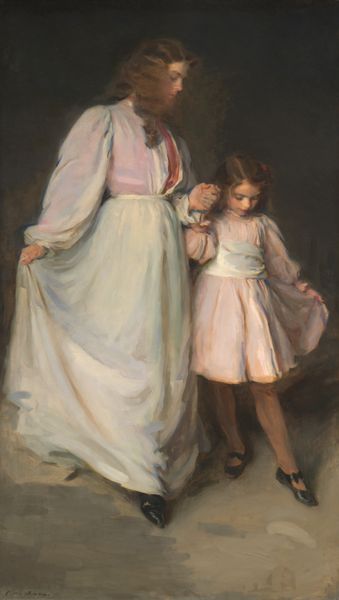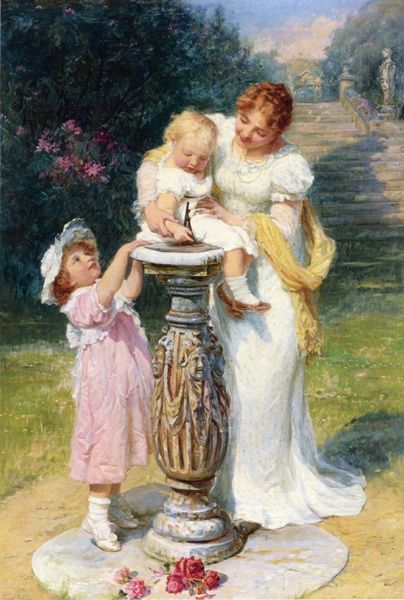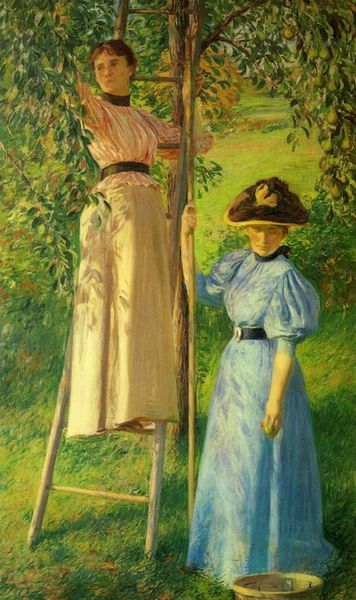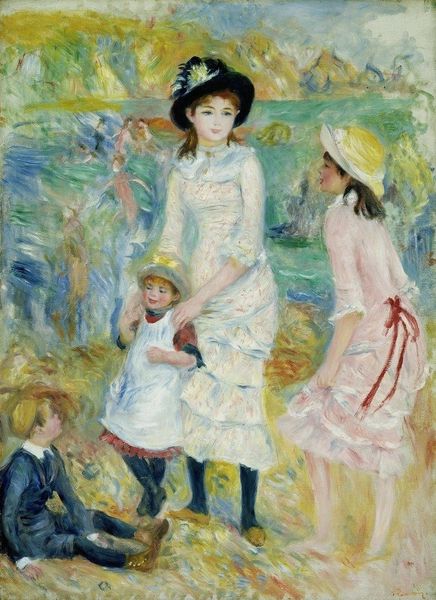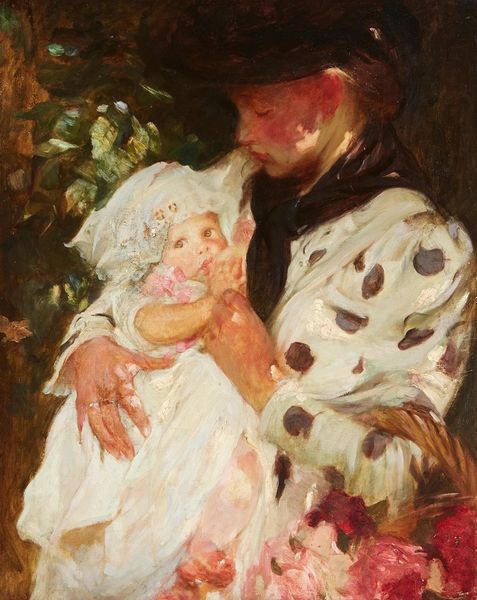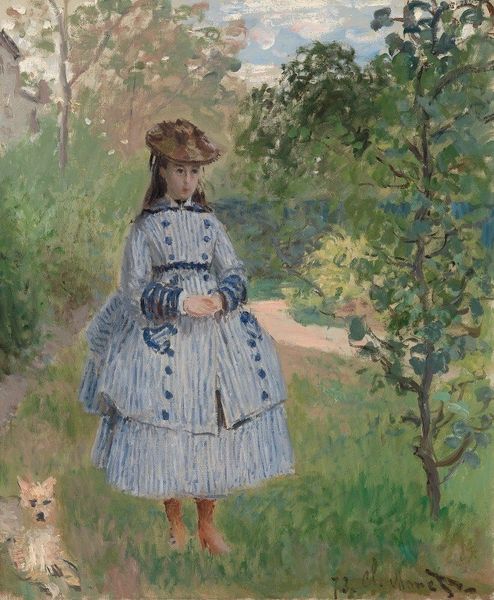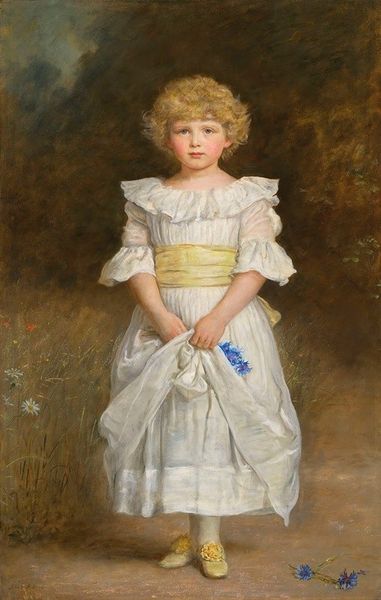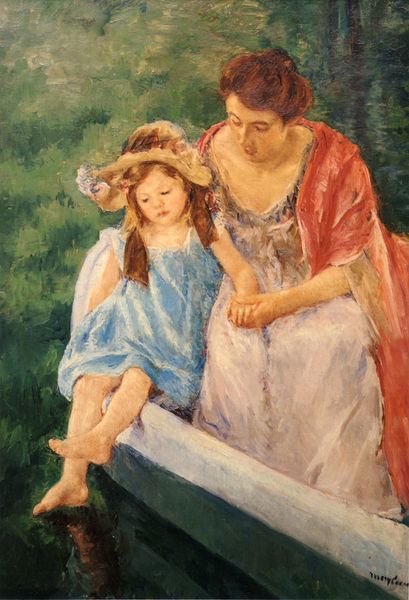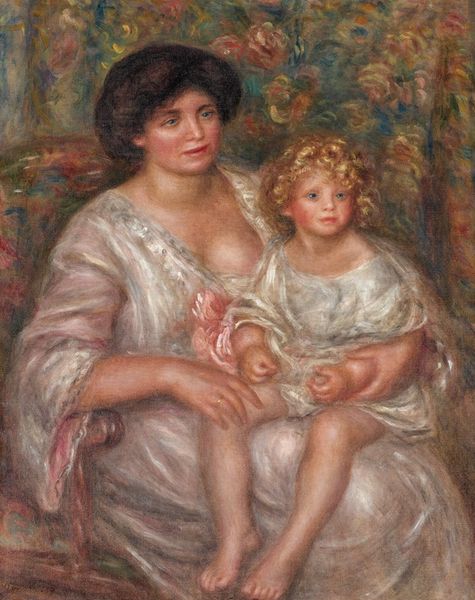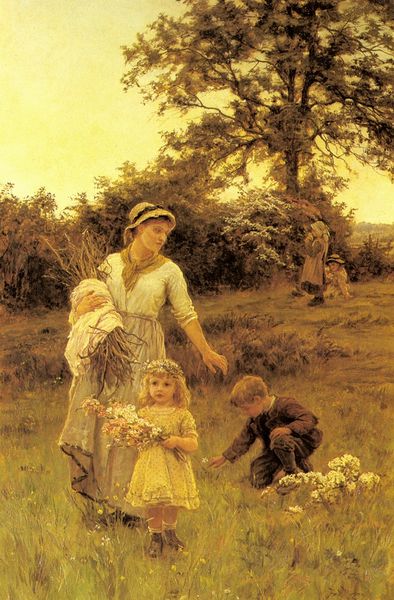
Copyright: Public Domain: Artvee
Editor: We’re looking at Renoir's *Promenade* from around 1906, painted with oils. I find the painting to be so gentle, from the colors to the soft rendering of the figures. What compositional elements stand out to you? Curator: Immediately striking is Renoir's masterful orchestration of light and shadow, evident in the dappled effect throughout. Observe how the chromatic relationships between the mother's blouse and the daughter's dress create a sense of unity, despite the variation in hues. It’s through these connections that we comprehend Renoir’s intended visual impact. Editor: The brushwork also looks very loose, almost unfinished in places. Is that intentional? Curator: Precisely. Consider the impasto technique employed here. Renoir builds layers of paint to achieve a sense of volume and texture, allowing the materiality of the paint itself to contribute to the aesthetic experience. Ask yourself: does this suggest a preoccupation with capturing fleeting impressions, or is there perhaps a more deliberate structure? Editor: I see what you mean about structure. The placement of the figures definitely anchors the composition, providing a clear focal point amidst the landscape. Curator: Indeed, their positioning relative to the verticality of the trees guides the viewer’s gaze and organizes space. We may consider that this framework is a strategy to unify figuration and naturalism. It is this interaction of color, light, and form that dictates the emotional resonance. Editor: I never thought of it that way, but focusing on the pure visual aspects really highlights how intentionally Renoir crafted this serene moment. Curator: Exploring purely visual elements helps to unveil intentional decisions, prompting new interpretations of such artworks.
Comments
No comments
Be the first to comment and join the conversation on the ultimate creative platform.
